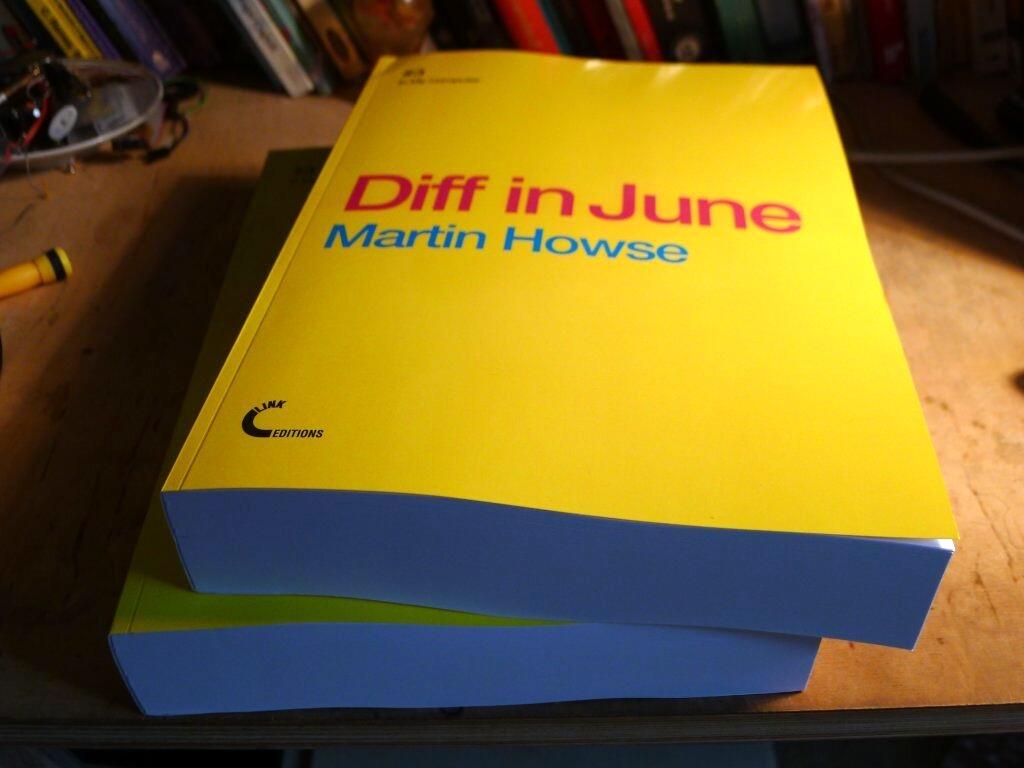Jennifer Gabrys: Digital Rubbish: A Natural History of Electronics (2011)
Filed under book | Tags: · archive, computing, electronic waste, electronics, technology

“This is a study of the material life of information and its devices; of electronic waste in its physical and electronic incarnations; a cultural and material mapping of the spaces where electronics in the form of both hardware and information accumulate, break down, or are stowed away. Electronic waste occurs not just in the form of discarded computers but also as a scatter of information devices, software, and systems that are rendered obsolete and fail. Where other studies have addressed “digital” technology through a focus on its immateriality or virtual qualities, Gabrys traces the material, spatial, cultural, and political infrastructures that enable the emergence and dissolution of these technologies. In the course of her book, she explores five interrelated “spaces” where electronics fall apart: from Silicon Valley to Nasdaq, from containers bound for China to museums and archives that preserve obsolete electronics as cultural artifacts, to the landfill as material repository. All together, these sites stack up into a sedimentary record that forms the “natural history” of this study.
Digital Rubbish: A Natural History of Electronics describes the materiality of electronics from a unique perspective, examining the multiple forms of waste that electronics create as evidence of the resources, labor, and imaginaries that are bundled into these machines. By drawing on the material analysis developed by Walter Benjamin, this natural history method allows for an inquiry into electronics that focuses neither on technological progression nor on great inventors but rather considers the ways in which electronic technologies fail and decay. Ranging across studies of media and technology, as well as environments, geography, and design, Jennifer Gabrys pulls together the far-reaching material and cultural processes that enable the making and breaking of these technologies.”
Publisher Digital Culture Books, an imprint of the University of Michigan Press, 2011
Creative Commons Attribution-Noncommercial-No Derivative Works 3.0 United States License
ISBN 0472035371, 9780472035373
225 pages
Reviews: Nicole Starosielski, Jussi Parikka (Semiotic Review of Books).
Interview with author
PDF
HTML
HTML, PDFs (added on 2018-9-23)
Wolfgang Ernst: Digital Memory and the Archive (2012)
Filed under book | Tags: · archive, art, communication, computing, culture, data, history, information, internet, knowledge, machine, media, media archeology, media studies, media theory, memory, photography, radio, sound, storage, technology, television, temporality, time

“In the popular imagination, archives are remote, largely obsolete institutions: either antiquated, inevitably dusty libraries or sinister repositories of personal secrets maintained by police states. Yet the archive is now a ubiquitous feature of digital life. Rather than being deleted, e-mails and other computer files are archived. Media software and cloud storage allow for the instantaneous cataloging and preservation of data, from music, photographs, and videos to personal information gathered by social media sites.
In this digital landscape, the archival-oriented media theories of Wolfgang Ernst are particularly relevant. Digital Memory and the Archive, the first English-language collection of the German media theorist’s work, brings together essays that present Ernst’s controversial materialist approach to media theory and history. His insights are central to the emerging field of media archaeology, which uncovers the role of specific technologies and mechanisms, rather than content, in shaping contemporary culture and society.
Ernst’s interrelated ideas on the archive, machine time and microtemporality, and the new regimes of memory offer a new perspective on both current digital culture and the infrastructure of media historical knowledge. For Ernst, different forms of media systems—from library catalogs to sound recordings—have influenced the content and understanding of the archive and other institutions of memory. At the same time, digital archiving has become a contested site that is highly resistant to curation, thus complicating the creation and preservation of cultural memory and history. ”
Edited and with an Introduction by Jussi Parikka
Publisher University of Minnesota Press, 2012
Volume 39 of Electronic Mediations
ISBN 0816677670, 9780816677672
265 pages
Reviews: Liam Cole Young (Reviews in Cultural Theory, 2013), Peter Ward (Information & Culture, 2014).
For more from Wolfgang Ernst see Monoskop wiki.
Comment (0)Martin Howse: Diff in June (2013)
Filed under artist publishing | Tags: · archive, data, language

Diff in June tells a day in the life of a personal computer, written by itself in its own language, as a sort of private log or intimate diary focused on every single change to the data on its hard disk. Using a small custom script, for the entire month of June 2011 Martin Howse registered each chunk of data which had changed within the file system from the previous day’s image. Excluding binary data, one day’s sedimentation has been published in this book, a novel of data archaeology in progress tracking the overt and the covert, merging the legal and illegal, personal and administrative, source code and frozen systematics.
The book, consisting of almost 24 million chars, is now made available in 3 different formats, determined by the production and distribution constraints of the platforms adopted: a full, freely downloadable PDF; a 500 pages PDF available on Issuu.com; and a 740 pages print-on-demand paperback available on Lulu.com.
Publisher Link Editions, Brescia, August 2013
Creative Commons Attribution-NonCommercial-ShareAlike 3.0 Unported License
ISBN 9781291503593
PDF, PDF (1673 pp)
Issuu (500 pp)
Lulu (740 pp)

